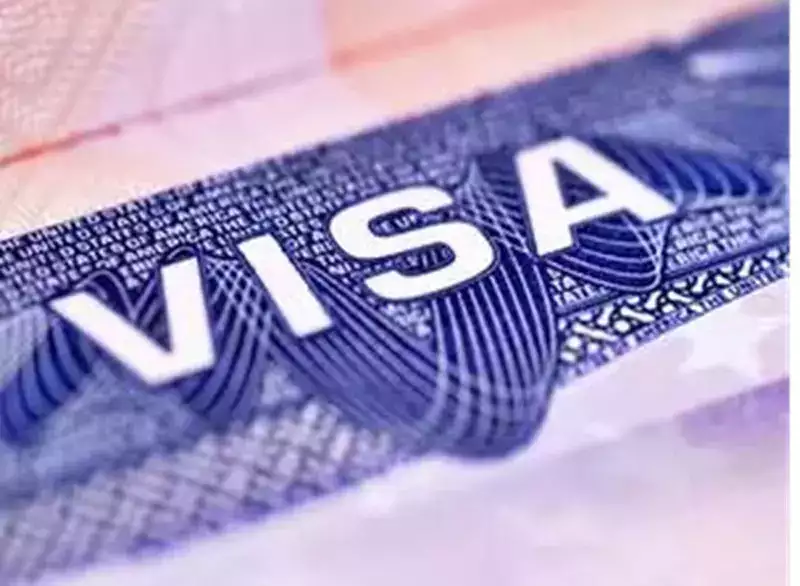Picture this: You’re a bright-eyed international student pursuing your dreams in America when suddenly, a single social media like becomes your ticket home. Welcome to 2025, where the US State Department’s new AI watchdog, “Catch and Revoke,” is turning campus life upside down for over 1.1 million foreign students.
In a dramatic shift that’s sending shockwaves through university corridors, more than 300 students have been shown the door in just three weeks. With canceled visas, detention centers, and self-deportation orders becoming the new normal, the message is crystal clear – watch your digital footprint, or pack your bags.
Recent Changes in US Visa Policies
The US Department of State has rolled out tough new measures targeting international students, with over 300 student visas canceled in just three weeks. At the heart of this shift is an AI tool called “Catch and Revoke,” which flags students based on their campus activism and social media activity. For the 1.1 million international students in the US, including 331,000 from India, these changes mean students must self-deport.
F-1 Visa Revocation Campaign
Students caught in this crackdown receive stark email notices from the State Department, telling them their F-1 visas are canceled under Section 221(i) of the Immigration and Nationality Act. The messages warn of fines, detention, or deportation for those who stay. As Secretary of State Marco Rubio bluntly puts it, “A visa is not a birthright.” Students must present their passports at US embassies for physical visa cancellation before leaving.
Role of AI in ‘Catch and Revoke’ Initiative
The State Department’s AI system scans students’ social media posts, likes, and shares to spot links to groups like Hamas. A simple one like you’re out on the wrong post can now flag someone for deportation. The AI tool helps officers take screenshots of questionable content during visa reviews, making social media activity a key factor in visa decisions. Under Trump’s immigration crackdown on March 25, both current visa holders and new applicants face this heightened digital scrutiny.
Impact of Social Media Activity on Visa Status
The State Department now tracks everything from protest attendance to Instagram likes. Students who “F-1 Visa Revoked” on posts about certain political topics risk getting flagged by immigration officials. The March 25 order makes officers save screenshots of students’ social media posts during visa checks.
Even minimal online activity can spell trouble – liking a single post could trigger deportation orders. Students have to watch their digital footprints carefully, as immigration agents review both past posts and real-time social media engagement. The stakes are high – one wrong click could mean packing up and leaving the US.
Campus Activism and Its Consequences
The crackdown hit home with the arrest of Tufts University PhD student Rumeysa Öztürk. Federal agents grabbed her near her apartment as she headed to an Iftar dinner. She’s now sitting in a Louisiana detention center after co-writing an opinion piece critical of her university’s stance on Gaza.
Students gathering at protests face swift action. In Somerville, demonstrators called Öztürk’s arrest “state-sanctioned kidnapping.” Tufts President Sunil Kumar admitted the school knew nothing about her detention beforehand, showing how these removals catch both students and universities off guard.
Five-Month Limit and Other New Regulations
The state department’s latest rules say international students who stay outside the US for over five months risk losing their visa status. Students must self-deport if they exceed this limit – even for quick trips abroad. This hits students doing fieldwork or studying in other countries particularly hard.
The changes also affect student options for international research projects. With tougher monitoring of who comes and goes, many students must pick between keeping their US visa or taking part in global academic work.
Implications for STEM Students and OPT
The visa crackdown hits STEM students especially hard, with many tech companies relying on international talent through Optional Practical Training (OPT) programs. “F-1 Visa Revoked” students who planned to work at US tech firms after graduation now face uncertain futures, with tech offers getting pulled over visa concerns.
The changes affect both current OPT participants and those hoping to join. Students working in AI, machine learning, and software development have particularly felt the squeeze, as companies hesitate to commit resources to workers who might face sudden deportation.
Economic Impact on US Universities
American universities face serious money troubles as international student numbers drop. With each international student paying about triple the tuition of domestic students, schools could lose millions in revenue. Some colleges get up to 28% of their budget from foreign student fees.
The ripple effects go beyond campus – local businesses near universities that count on international students’ spending also take a hit. Housing markets around major universities feel the pinch too, as fewer students need apartments and dorms.
Responses from Educational Institutions
Universities across America are speaking up about the student visa cancellations. Todd Wolfson, who leads the American Association of University Professors, called for schools to band together to protect students’ free speech rights on campus.
At Tufts, President Sunil Kumar voiced worries about the impact on international students, saying these sudden arrests left the school community “frightened and distressed.” Many colleges now scramble to support their international students while trying to balance campus safety with academic freedom.
Legal Challenges and Policy Comparisons
Immigration attorneys point to free speech concerns in challenging the AI-based visa cancellations. The policy marks a sharp turn from past rules, where students got warnings before any visa action. Now, one like and you’re out can trigger removal.
The current changes build on Trump-era immigration crackdown, but with stricter tech monitoring. Unlike previous immigration shifts that focused on border control, this targets students already studying in the US. Critics say the AI screening tool raises privacy issues, with some lawyers filing cases against what they call “digital deportation.”
Impact on Specific Nationalities
Indian students face the biggest hit from this visa sweep, making up nearly a third of the 1.1 million international students in the US. Since January 2025, 388 Indian nationals got sent home, with another 295 waiting in custody. The Indian government told its students to follow US laws carefully after the arrests started.
Indian tech students feel extra pressure since many planned to work in Silicon Valley after graduating. With job offers getting pulled due to visa worries, many head back to India earlier than expected.
Future of International Education in the US
The visa crackdown casts a shadow over US higher education’s standing as a top study spot. College advisors in India and China report students picking Canada, the UK, and Australia instead. Some US schools already face a 20% drop in foreign student applications for fall 2025.
Education groups warn that pushing out international talent helps rival countries’ universities. They point to Canada’s growing tech scene, which happily takes in students blocked from Silicon Valley jobs. British schools pitch themselves as more welcoming, offering three-year post-study work permits that stick.
The loss hits US research labs too. With fewer global minds in science programs, American schools might slip from their top spots in world rankings. Some university heads say cutting off foreign talent goes against what makes US education special – mixing different viewpoints and cultures.
The Road Ahead: Uncertain Times for International Education
What started as a targeted crackdown has morphed into a seismic shift in American higher education. With universities bleeding millions in lost tuition and rival countries rolling out the welcome mat, the US risks losing its crown as the world’s top destination for international students.
As campus halls echo with uncertainty and social media becomes a minefield, one thing’s crystal clear – the landscape of international education is changing at breakneck speed. The question isn’t just about who stays and who goes anymore – it’s about whether America’s universities can maintain their global edge in an increasingly competitive academic world.











